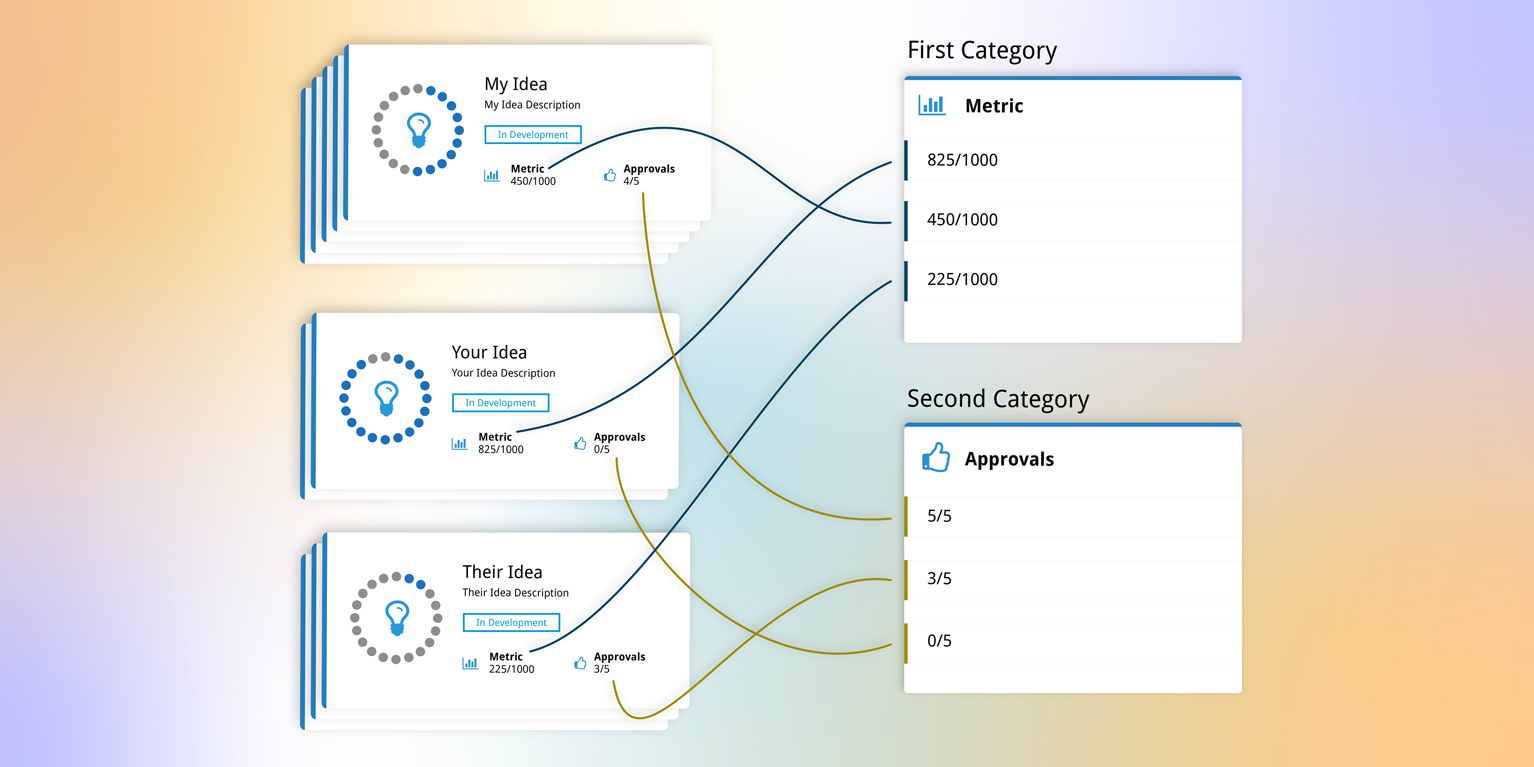Strategic Ideation Top Trumps: The Comparison Concept for Better Strategy
The Comparison Concept
I still remember clearly, all those (many) years ago, sitting in a circle with my friends in the school playground playing a card game called Super Trumps (more widely known in other parts as Top Trumps). It was a simple concept: the pack of themed cards each describe a set of performance metric values relating to, in our case, hot rods. Gameplay involved calling out a category in the hope that the value on your card “trumped” all others in the round, and if it did, you would take all the cards, and choose the next category. The winner was the last player standing with the whole deck.
Applying the concept to strategy
So, what possible relationship does Super Trumps have to the problem of Strategic Portfolio and Execution Management? We also utilize the side-by-side comparison method to visually represent competing strategic ideas in StrategyBlocks 6, whether they be strategies, portfolios, projects or whatever you wish to call them. But there are many more categories when considering the next best strategy and potentially many more cards in the deck. The risk is even greater here as organizations have finite resources, which may include people, time, and the costs associated with successful execution.
What is the problem to be solved?
In a previous blog, I discussed harnessing the great thinking that occurs at the “edge of the organization”, for it is those individuals who are often nearest to the customer, and more importantly, nearest to the customer’s problem. Since strategic planning (strategizing) is becoming an almost constant process for strategically mature organizations, listening intently to those people, and providing them with an integrated platform for strategic ideation is critical. Note that it is not just ‘ideation’, as this is not a suggestion box sitting in the middle of the office. Ideas must be aligned with vision and mission and therefore they must be strategic in nature, or they could be leading us away from our primary goal and linked outcomes. So, a ‘super idea’, that trumps all the others, will have the least contention for resources, the best possible return on investment, be linked to a known outcome, have its risks considered, and ultimately be aligned with vision and purpose.
How many cards are in the strategic deck?
Your deck of strategic ideas will be governed by how many people are contributing, how long they have been contributing, and how easy it is to contribute. Therefore, there may be a significant number, and a number that is constantly growing. It is important to remember that new ideas from the distant past may still have great value at some point in the future, so there needs to be a simple method of searching and comparing across a library of ideas.
Key categories for strategic super trumps
In StrategyBlocks, we have three sections of comparative categories: Details, Measures, and Custom, they can be a mixture of quantitative and qualitative attributes.
- Details – captures the Idea owner, creation date, expected duration, focus area, number of likes and comments.
- Measures – quantifies the idea by maintaining a count of linked measures (outcomes, KPI’s), blocks (the Ideas structure), risks, files, approvals, and a value for resource contention (resourcing overlap).
- Custom – fields that can store whatever additional information you need, either qualitative or quantitative, this could include the problem to be solved, assumptions, ability to execute, and/or customer importance.
Card Comparison
Visual comparison of ideas allows people to compare ideas quickly and easily. Using StrategyBlocks’ comparison cards to compare the pros and cons of different ideas, they can quickly see which idea is better for a given situation, how to deploy resources more effectively, and make more informed approval decisions. Visualizing these relationships as part of an enterprise ideation process will lead to better strategic understanding and a better future strategy.




Leave A Comment